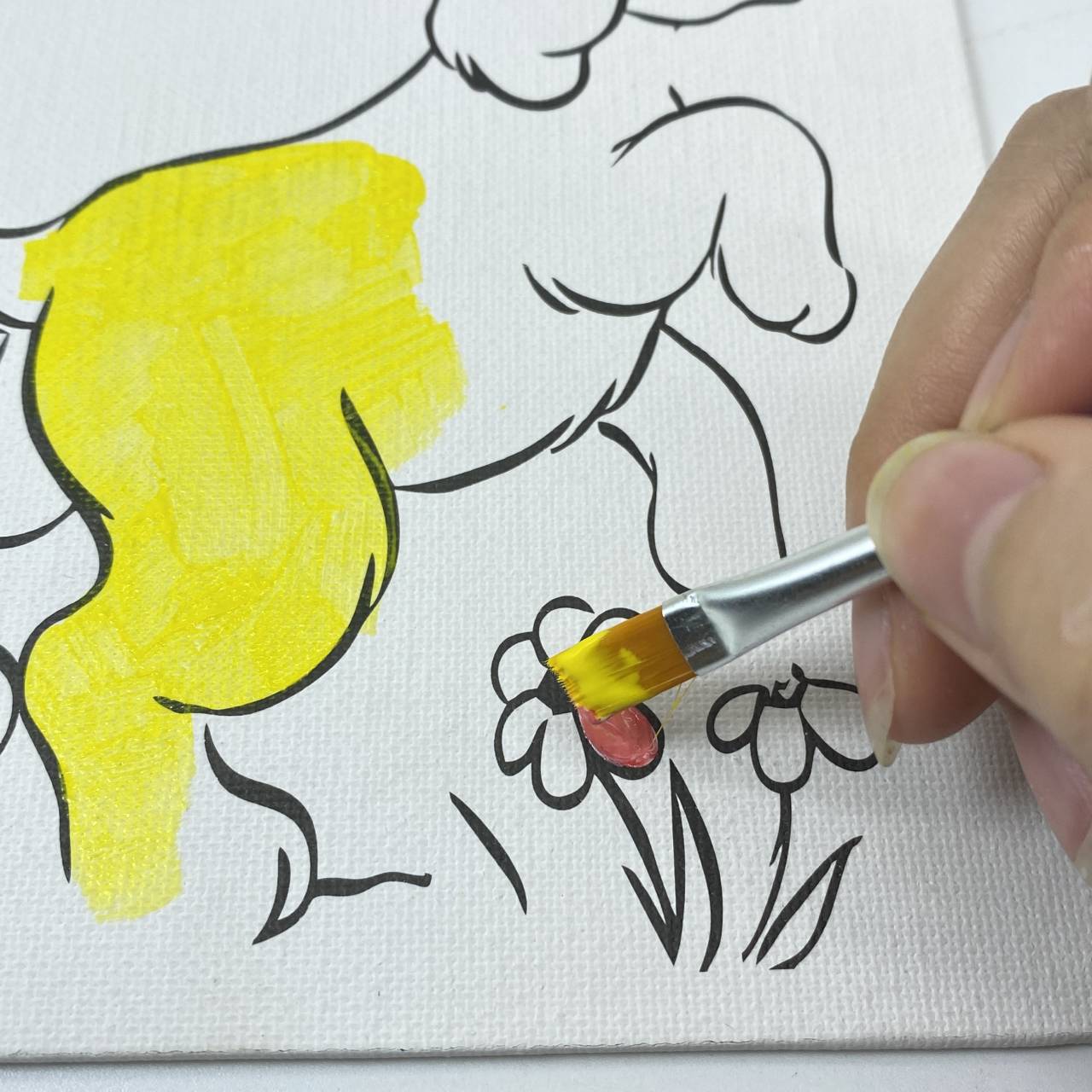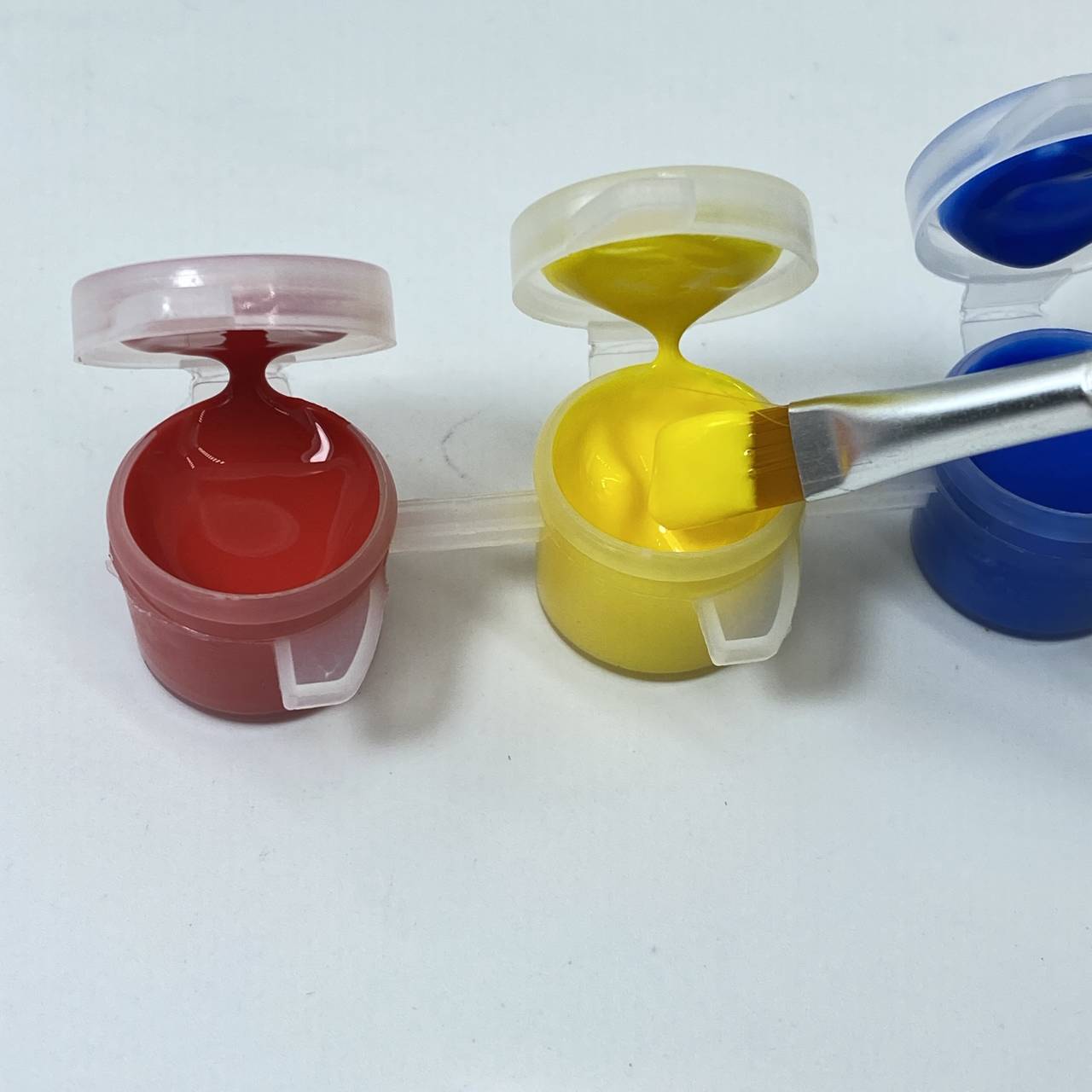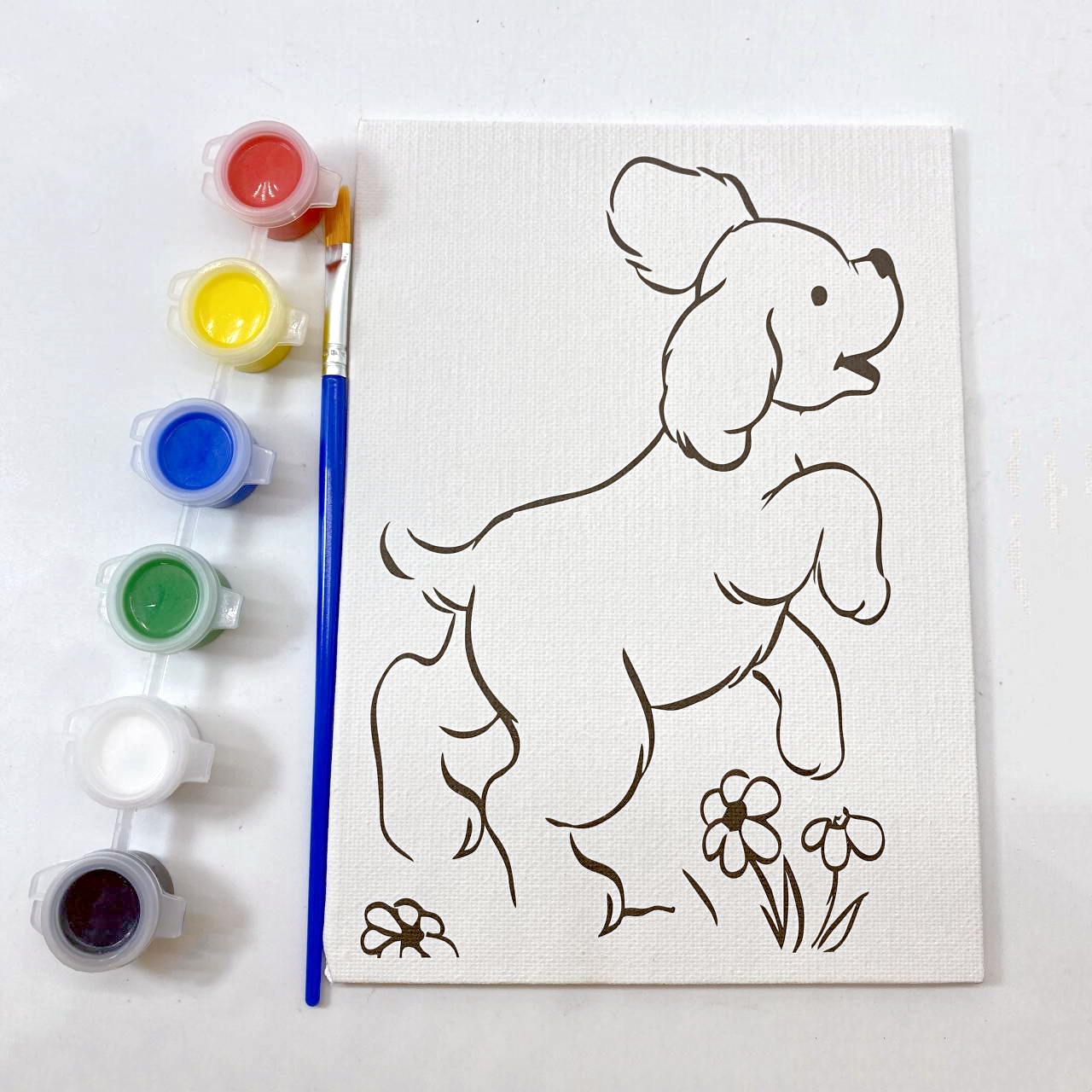Digital Oil Painting
Digital oil painting, also known as digital colouring and coded oil painting, is a hand-painted product that is processed into lines and numerical symbols through a special process, and the painter only needs to fill in the colour filling area marked with a number with the corresponding pigment marked with a number.
1、Preparation before painting
Prepare the necessary items such as a cup for washing the brush and diluting the paint, a dish for mixing the colours, and newspaper to prevent the table from getting dirty, and then you can start painting.
2, Start Painting
Open the package, take out the colouring products and the paint marked with numbers, and add the numbers on the paint one by one corresponding to the numbers on the colouring products.
3, Sample process one
Don't be intimidated by all the lines and numbers at the beginning, you can paint them one by one in the order of the numbers or shades of the colours, and slowly learn the technique of painting.
4, Example 2
After painting one colour, check to see if any blocks have been missed and then continue with the second colour until all colours have been completed.
5, Example 3
After careful painting, a beautiful picture is about to be presented. With more experience, use the painting techniques you have learnt to make the picture even more beautiful.
6, Framing
People in the industry often say that three parts of the painting seven parts of the framing, can be seen the importance of framing, can be used for special DIY frames and other accessories to mount the finished product.



Once you have filled in all the numbered areas you will have a stunning painting, but if you wish you can also use the following techniques to vary your painting style and make your painting even more expressive.
Overblocking
If you want to make the border between two colours soft and natural, you can wipe the brush dry and then dip it in the right amount of paint and gently sweep the edges of the colours to make the border blurred with a blurred effect. (Note: The dotted line in the picture can be treated by the method of blending the colours).
Thin Paint Method
After diluting the pigment with water, gently cover the dry picture with a layer of transparent colour to achieve the effect of translucent colour.
Pointillism
Adopting the method of point painting at the edge of the colour block can smoke the effect of particles. The method is to dip the tip of the brush into the full pigment and then use the tip of the brush to gently paint back and forth between the edges of the colour block, paying attention to control the shape, size and sparseness of the colour dots in order to achieve different effects.
Feathery Excess Method
To form a feathery effect on the borders between the colours, you can quickly drag the brush around the edges of the colours to create a hairy texture to express the special texture of the object.
Adding details
Adding details such as dots and lines after painting will make the picture more vivid and full of life.
1. Cover the lid tightly when you are not painting, otherwise the paint will easily dry and knot.
2. When you pause to paint, clean the brush first, the brush tip with paint will dry up easily. If the paint dries out completely, the brush will be useless.
3. Apply the glitter more than 48 hours after the painting is finished. Wait until the pigment is completely dry before applying















